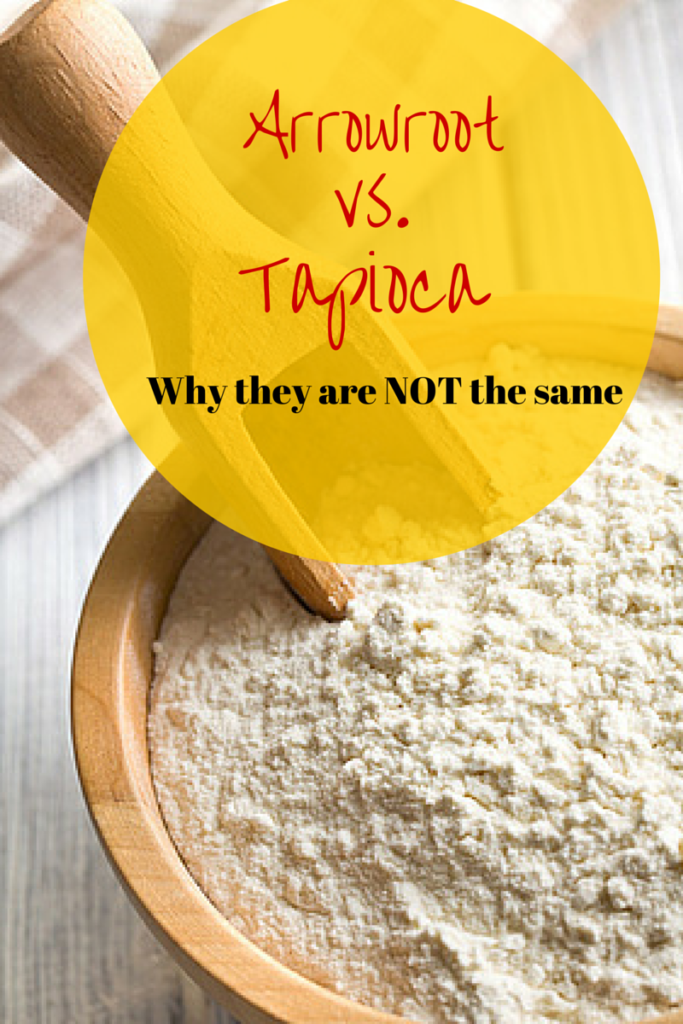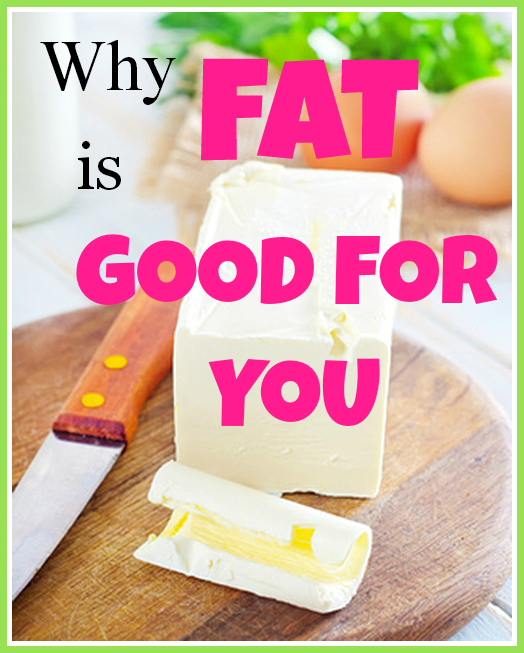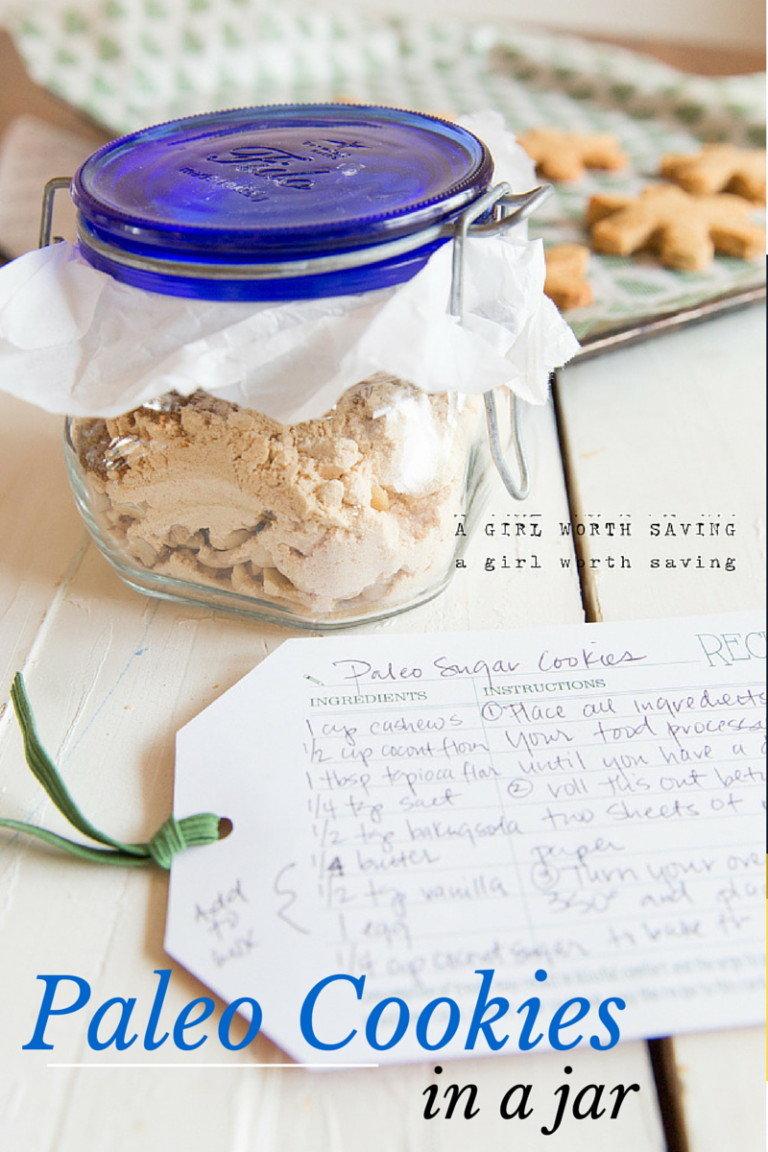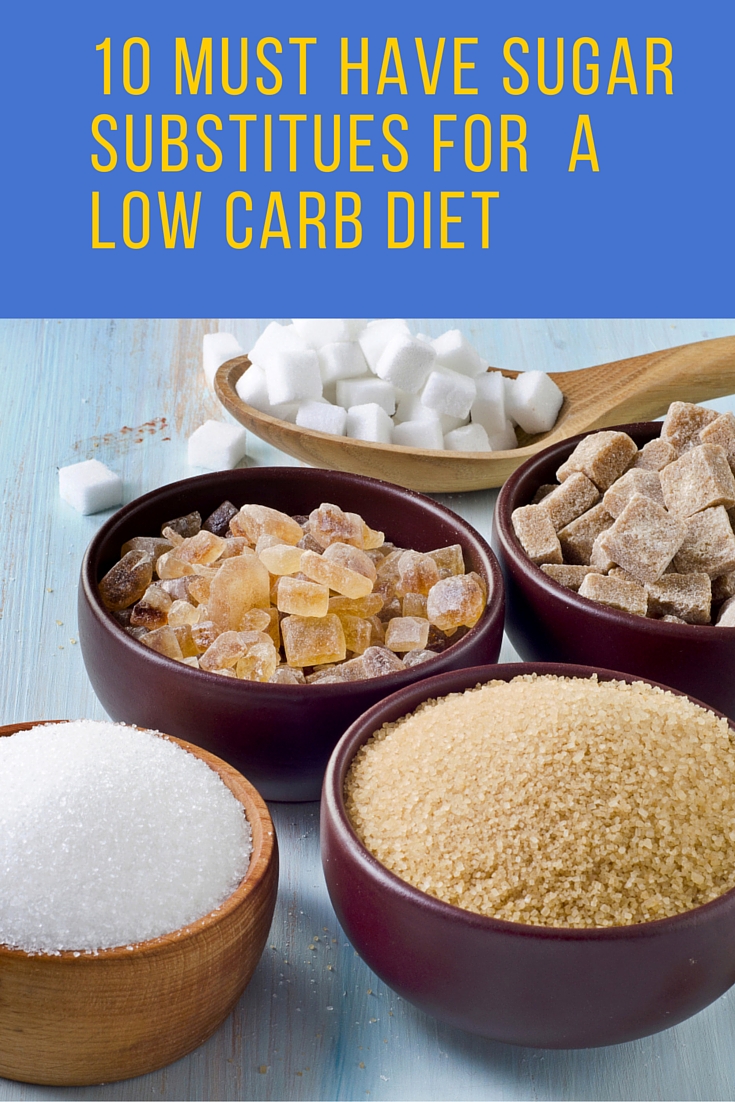Arrowroot powder vs Tapioca flour: What’s the Difference?
This post contains affiliate links. Click here to read my affiliate policy.
Last Updated on October 9, 2023
Are arrowroot powder and tapioca flour the same? We’ll dive into how they are different and when you should use one versus the other in recipes.

Arrowroot vs Tapioca. I know when I first came to the Paleo Diet, I had no idea what the difference was between Arrowroot powder and Tapioca.
I thought they were the same and I soon learned they were not the same animal at all.
Although many people use the name arrowroot powder interchangeably with tapioca flour, they are not the same at all. Honestly, I also thought this was the same with gluten-free baking powder but I was wrong.
They are both procured from tropical root vegetables, but entirely different plants.
Arrowroot starch comes from the Maranta arundinacea plant, which is considered an herb, while tapioca is obtained from the cassava root.
They are both gluten-free, so they are popular thickeners for those with gluten sensitivities.
While both arrowroot and tapioca are used to thicken sauces, soups and such, they are just different enough to make it important for you to know the differences so that you can use them for top results. This is something that you will also hear in the best culinary schools.
What is Arrowroot powder and what is it’s uses?
Arrowroot flour is great for thickening such foods as sauces, fruit desserts, glazes and baked goods. It produces a glossy shine to foods as it thickens, which can be beneficial with certain types of foods, such as glazes.
However, in some combinations, like in meat sauces, arrowroot’s glossy finish can produce an odd effect.
Arrowroot powder has two specific perks over other thickeners: first, it can be used with acidic liquids.
Many other thickeners are not reliable to use with acidic foods because they break down and lose their thickening properties.
Second, arrowroot is recommended for thickening foods that you plan to freeze later because it stays stable at low temperatures.
If you need to use a thickener for a milk-based food, arrowroot is not what you want to use since it turns slimy when added to dairy.
It has very little taste of its own, and therefore will not interrupt with the flavor of the prepared mixture.
Arrowroot should be added at the end of cooking because it thickens quickly and can start to break back down and become watery if left over heat for an extended period of time
Arrowroot Flour Recipes
Paleo Fruitcake – This all-natural Paleo Fruitcake recipe uses dried fruit, lemon zest, and spices for a perfect holiday treat!
Simple Paleo Tortillas (Gluten-Free) – Are simple paleo tortillas really possible?! If you’re looking for a really easy paleo version of a flour tortilla (or a crepe), look no further.
Chili Hand Pies – These portable savory hand pies are perfect for a simple lunch or snack.
What is Tapioca flour and it’s uses?
(My favorite Tapioca Flour Brand)
You know this is one of my favorite flours to work with and I’ve got a lot of detail on how to work with it in my cookbook Paleo Eats and some helpful tips in my Guide to Paleo Flours.
Sometimes called tapioca starch, tapioca flour, like arrowroot powder, is most often used to thicken glazes, sauces, gravies and baked goods.
It stays stable in cold temperatures, so it too is good to use for foods you will freeze.
It also works well in milk-based recipes, so it should be used instead of arrowroot for gravies or other dairy-based recipes.
Tapioca is not recommended for use with high acid foods because it loses its ability to thicken when mixed with acidity.
Liquids thickened with tapioca will have a transparent sheen which adds to the presentation of many foods.
Like arrowroot, tapioca has very little taste of its own, so it will not interfere with the taste of a recipe.
Tapioca thickens quickly, so is a good staple to keep on hand for last-minute thickening before serving a dish.
Tapioca can withstand being heated for a long period of time, which is an important difference from arrowroot.
Some cooks like to use pearl tapioca in pies and puddings, but take note that these pearls often do not fully dissolve, so it is recommended to use the starch to ensure the tapioca completely dissolves, unless you want the added texture.
To avoid clumping, both arrowroot and tapioca starch should be mixed with cold water before adding them to your hot mixture to thicken.
Neither requires high heat to dissolve, so they can be added towards the end of cooking without concern for taste.
Tapioca Flour Recipes
Paleo Sugar Cookies – These paleo sugar cookies are buttery soft and the perfect sweetness
Paleo Pop Tarts – Pop Tarts that are vegan to boot!
Paleo Pizza Crust – Crispy just like you remember pizza crust should be!
Butterscotch Cake – Love butterscotch candy? You will love this healthy gluten-free butterscotch cake.
Paleo Pretzels – You’ll love how chewy these pretzels are! Dip them in butter or mustard for an extra treat.







Just made your pretzels. They are so delicious warm with mustard! The only issue I had was that some of the pretzels did not retain their shape while baking. But, they still tasted amazing.
Thank you for yet another wonderful recipe!
I’m glad you enjoyed them Debbie. I’ll have to ponder on what was the cause.
Great article Kelly! Think this is definitely one of those areas that confuse people (me included!)
What substitute options are available for those allergic to tapioca?
You can try Arrowroot since it’s similar but obviously not from the same plant hun.
When do you use one over the other when you bake. I generally see tapioca uses in GF products.
I know a lot of people substitute them without any issues. I just prefer Tapioca flour.
As a diabetic, I have a harder time with my blood sugars after eating tapioca than with arrowroot.
Diabetic Paleo
Thanks for sharing that Natalie.
Tapioca flour is typically a powder made from dried ground starch extracted from cassava through soaking, washing, and pulping – more of a simple carb. Quite different from Cassava flour (finely ground cassava root), but the same plant. Cassava may apparently be an especially good substitute for people with diabetes or prediabetes because it has a lower glycemic index score than wheat flour.
This is excellent! Thank you!
What a timely article. I brought home a bulk bag of tapioca starch and a bulk bag of arrowroot starch last night, and I can’t tell them apart! Do you have any way to distinguish between the two without a label? Any experiments I can do to figure out which is tapioca or arrowroot?
I would try dissolving some in milk to see which one was slimy (arrowroot).
Hi Kelly! I just wanted to say thank you for your articles and recipes. They are always very helpful and ENJOYABLE! <3 Judy
And then there’s cassava root flour…
yeah, Cassava flour is totally different though. It doesn’t behave like either of these flours.
Great article Kelly, it’s to have an explanation of both handy.
AWWWW….I WAS HOPING FOR A LITTLE BIT OF PROFESSIONAL ADVICE ON HOW TO AVOID THE FLOUR BOMB WHEN MEASURING (EITHER OF) THESE FLOURS OUT. THEY ARE HORRIBLE IN THAT WAY. KA-POOF!!!!
Yes, they do kinda explode. I just scoop slow and move like molasses lol.
But…but…what about which is healthier for you? Which is better at not raising blood sugar? Which has a lower glycemic load?
Both are starches so they are going to raise your blood sugar hun. If you are worried about this hun you should use almond flour and coconut flour.
Thank you for a great article! I am new to this so your article helped me 🙂
Which one would be best for making Vegan (lactose-free) Ice Cream? I have been given an ice cream machine and no idea what to do with it.
I’ve made a truck load of ice cream recipes for the blog and never used either flour to be honest. Just make sure to use full fat coconut milk and it will work hun
I got a recipe from another site on how to make corn free baking powder and it calls for arrowroot. I was wondering if tapioca was okay to substitute for this recipe as it is what I have on hand. After reading your post, I wonder if tapioca starch would be the best one to use anyway>
I think it would be fine Michelle.
I’ve recently read on the Iodine Workshop that tapioca is a goitergen; I can’t find out if arrowroot is too.
Oh wow, thanks for sharing hun
Very helpful article. I have an icing recipe and it require arrowroot but I picked up tapioca instead. I was wondering if I could substitute for equal amounts. Thanks.
Hey Kelly,
Thanks for all your awesome info and recipes!!! FYI on tapioca….it can act as a “cross-reactant” to gluten(causes a similar reaction to gluten in CERTAIN peoples bodies) even though it is chemical different. CYREX Lab which does alot of immunology testing has a list of a number of foods that can act like gluten in certain(not all) people
Doug
Thanks for sharing Doug
Hi Kelly, my name is John and can I ask you a question about replacing arrowroot flour or starch ( is it the same ) . I found this gluten free flour mix that has the following: 2 1/2 cups brown flour; 1 cup tapioca flour; 1 cup potato starch,and 1/4 cup arrowroot flour. How can I replace or substitute the arrowroot flour with or can I omit it and if I do will it jeopardize the entire mix? Thank you very much John.
Hun, you are using a mix so this is not a 1 to 1 replacement. Unfortunately, you would be doing recipe development if you made the switch and I can’t help.
I am trying to bake my first paleo bread. The recipe calls for cassava flour and arrowroot flour. Can I substitute tapioca flour in place of arrowroot flour?
Yes, you should have no issues doing this Stephanie.
Can we use taro root flour instead of arrowroot flour in recipes? The question is, both are same or not? Please reply
I’m not sure hun. I would think if it’s not as processed as arrowroot and tapioca flour and would be more similar to Cassava flour.
Thank you so much for clarifying the difference between Arrowroot and tapioca. I am just starting the AIP diet and so it is essential not to use tapioca. I am glad I read labels!
Hi, any input on using tapioca or arrowroot starch for coating meat? I usually use cornstarch, but decided to use tapioca. OMG, what a disaster! When it was time to cook the meat (and I was expecting to get that crispy coating), it all stuck together no matter how often I would seperate the pieces or leave them apart from each other, as soon they touched an other piece they would stick like crazy. So I don’t think these 2 starches are good for coating anything you want to cook.
I would use Cassava flour hon
What is the ratio for substitution for arrowroot to tapioca, please
I would do a 1 to 1 ratio.
Thanks for sharing!
Do you know their difference in terms of appearance or taste? I have both but labels in my jars came off so don’t know now which is which =)
Unfortunately no. You can try a cold test to see which one reacts like arrowroot and tapioca.
Thanks for at least, trying, to distinguish between these two very similar looking powders. Unfortunately, many items claiming to be Arrowroot powder, sold on Amazon, are actually Tapioca starch, including, possibly the one you reference made by Bob’s Redmill. To test this brand, I put 2 tbsp of the powder in a stainless 1/4 cup measuring cup, added 2 tbs of distilled water and set it in a saucepan of water which I heated to a medium high temp. I heated it continuously for 45 minutes during which time it gelled, then, retained its gel viscosity the entire time. If, this were real Arrowroot, according to everything published about it, it would have lost its gelling status over that peotracted time at a very high heat. I contacted Bob’s Redmill and they claim that it is not tapioca starch, but could not explain why it remained an unalMunalMMtered gel during this process. Perhaps you should look into it, as well, since you are promoting this brand as your favorite.
Thanks,
MM
Thnks Mary Anne!
What would you recommend using in making fruit leather please?
Many thanks
Daxa
When making fruit leather, I recommend using tapioca flour as a thickener. Tapioca flour works well in fruit leather recipes and helps achieve a smooth and cohesive texture. It’s an excellent choice for binding the fruit puree together and giving the fruit leather a consistent and appealing appearance. Enjoy making your delicious fruit leather with tapioca flour!
which would you use when thickening canned pumpkin pie filling, arrowroot or tapioca flour?
just can’t seem to get the pie to have that custard like consistency.
I’ve tried flax and white chia, so your suggestions will be greatly appreciated.
Thanking you in advance.
Bob
For thickening canned pumpkin pie filling to achieve a custard-like consistency, I recommend using tapioca flour. Arrowroot can also work, but tapioca flour generally gives a smoother and more gel-like texture. Both flax and white chia might not provide the desired consistency for a pumpkin pie filling. Give tapioca flour a try, and I hope it helps you achieve the perfect custard-like texture. Happy baking, Bob!